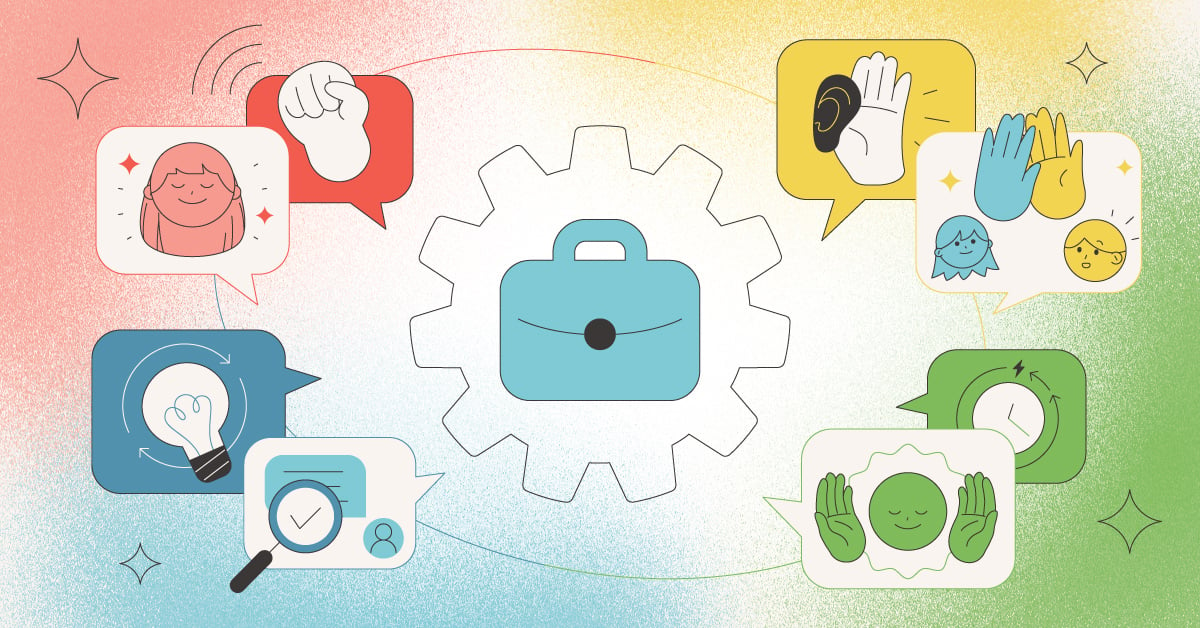
Leading a successful team can be compared to directing a musical performance, such as a classical orchestra or choral concert. Individuals who bear little resemblance to each other often need to learn how to harmonize and respect the differences they bring to the team. Their diversity in style and substance, when properly harmonized, makes beautiful music.
It is rather easy for a conductor to identify who plays what instrument. It is no less important for managers to know the behavioral or work styles of the individuals they manage and how they can best contribute to the organization.
Behavioral styles, such as DISC, can tell a lot about how a person will typically behave a majority of the time. The DISC indicators can be considered predictors of how a peer or colleague might approach a challenge or influence others to their way of thinking.
Being able to adapt to people who possess different behavioral styles is the key to success in both business and in life. Since behavioral styles are observable, it’s easy to determine someone’s style and react accordingly.
As someone who specializes in mentoring, I often discuss ways a mentor can best work with a mentoree, even with very different behavioral styles. While the examples below illustrate the mentor/mentoree relationship, these skills can be applied between any two people communicating in any setting.
DISC Defined
DISC is an acronym that stands for Dominance, Influence, Steadiness, and Compliance. The science of DISC explains the “how” a person does what they do, and can be a strong predictor of future behavior.
When someone scores higher in one particular area of DISC compared to the others, they are considered “high” in that particular factor. High-D’s are all about results. High-I’s are about interaction. High-S’s seek stability while the high-C is all about following rules. This basic understanding helps to illustrate how to identify various behavior styles when entering a room with other people.
Working With an Opposing Behavioral Style in a Mentoring Partnership
Sometimes, you might be paired with someone because of their career trajectory or technical expertise but find that you do not share much else in common. Here are some ideas for working with a partner whose DISC style feels in opposition to your own:
A high-D and a low-D -- For the high-D adapting to the low D: Slow down. Drop the intensity. Create a safe learning environment. If the low D feels calm and comfortable, they are more likely to admit “I don’t know” or “This is where I need help.” Low Ds like lessons to follow and a forum to discuss problem-solving options.
A high-I and low-I -- Outwardly, these two styles share very little in common — one is people-oriented and the other is task-oriented. One tends to trust indiscriminately while the other tends to remain guarded and untrusting. The high-I will have to respect the low-I’s low-trust level and will need to seek to build trust gradually. Ask the low-I for their input while planning development activities and for their impressions on how comfortable they are with stretch assignments.
A high-S and a low-S - In this relationship, the calculated decision-maker must adjust to a high-risk taker. In other words, someone who prefers a slower pace (high-S) needs to work with someone who moves quickly. The high-S will need to pick up the pace when communicating with the low-S: cover only the high points and strive for directness.
A high-C and a low-C – Because the high C and the low C are both task-oriented, the area of potential conflict lies within the scope of compliance and risk-taking. The risk-averse high-C competes with the low-C’s need for independence which can many times cause a considerable amount of tension. The high-C will need to give the low-C honest feedback if they are tackling problems with little regard for the possible ramifications of a quick decision.
Using DISC to Design Developmental Activities
No matter which style each partner brings to the relationship, savvy mentors will look for opportunities to move the mentoring meetings beyond philosophical chats and/or venting sessions. In other words, to maximize learning, mentors should engage the mentoree in a variety of situations and developmental experiences.
To keep your mentoree engaged, consider their DISC style (both highs and lows) when designing development activities. For example:
High-D’s, high-C’s or low-I’s - Tend to put tasks before people, so they struggle with interpersonal skills. If the goal is to enhance people skills — ask your mentoree to consider investing one day each month listening to the concerns and needs of his/her employees or peers. Encourage them to look for opportunities to help someone talk through a project with which they are struggling.
High-I’s or high-S’s — These two behavioral styles have trouble setting clear standards and holding others accountable - particularly people over whom they do not have authority. In this case, perhaps the goal would be to work with your mentoree to create a project management system for following up on outstanding tasks and action items.
Low-S’s or high-D’s —These two styles tend to struggle with maintaining emotional intelligence during difficult times/situations. The ideal developmental activity would be to identify someone for the mentoree to shadow who is going to lead a team through a difficult conversation about a failed project.
Low-D’s, high-S’s or high-C’s — These styles need time to think things through before making a decision or taking a risk. To help build confidence in decision-making and risk-taking, encourage your mentoree to journal about what holds them back from making a decision. At your next mentoring meeting, discuss the pros and cons of the decision and an action plan for moving forward.
DISC as a Guide for Mentoring Meetings
When meeting with a high-D or high-C: Expect these meetings to be brief and to the point. Be sure to show up on time and prepared to dive into business.
When meeting with a high-I: Provide a friendly and fun environment. Give them plenty of time to talk. Remember they get pretty excited about things – lots of things – so you might need to ground them a little.
When meeting with a high-S: Just like the High-I’s, they need a friendly environment. Don’t rush headlong into business, give them a chance to break the ice and warm up to you. Always give them time to think things through. Be sure to send an agenda ahead of the meeting so they know what topics you would like to discuss.
When meeting with a high-C: Be sure to show up on time and stick to business. Don’t expect the meeting to run a full hour if they run out of things to discuss. Be careful of appearing too lighthearted, casual, or showy, and be sure to follow through on your promises. Just like the High-S’s, they will appreciate an agenda sent ahead of time.
Conclusion
Whether you are in a mentor/mentoree relationship or simply communicating with a friend or co-worker, understanding and being able to adapt to different behavioral styles is the key to great communication and success in work and in life.




![Don’t Let Your Behavioral Style Haunt You [Infographic]](https://blog.ttisi.com/hubfs/Halloween-Infographic_DontLetYourBehavioralStyleHauntYou_Email_Header.png)